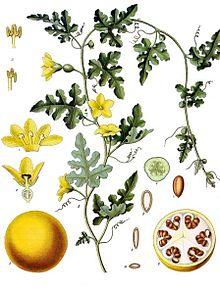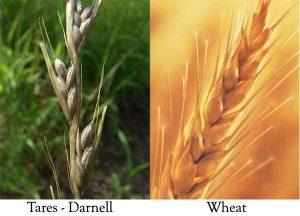Angels and Spiritual Gifts
[cvm_video id=”5471″]
Fruits of Spiritual Harvest: Barley
Of the seven fruits God guaranteed the Israelites in the Promised Land, Barley seemingly stands out as the most mundane. But, this humble grain stood as an example of how God intended His People to fully rely on Him for their all their physical necessities.
Though we typically think of barley in relation to the feeding of the 5,000 Jewish men, with five barley loaves and two small fish, during Passover, there were multiple instances where it was used to miraculously provide for the physical requirements of those faithful enough to follow the instruction of God’s Prophets.
Barley, as explained in a previous article, stood as a kind of national grain for Israel (Judges 7:13). It was typically the food of the poor (2 Kings 7:1) and often fed to animals as fodder (1 Kings 4:28) and would have been the main and sometimes only source of flour during lean times.
During a great famine, Prophet Elijah asked a destitute widow for a small piece of bread to eat and she replied that she only had enough [barley] flour and oil to make a single serving for her and her son to split between them before they died. Elijah explained that if she made him food first, her supply of [barley] flour and oil would not run out. She trusted the Man of God and her faithfulness was rewarded by God blessing her pantry with a constant supply to feed the widow, her son, and Elijah during the food crisis (ref. 1 Kings 17:8-16).
Prophet Elijah’s successor, Elisha also experienced a severe drought and while gathered with a school of prophetic students for a meal, a servant went out foraging and accidentally gathered Citrullus colocynthis, a poisonous desert gourd, and cut it up into the stew. The men gathered ate the stew and quickly realized that “there was death in the pot“. This poisoning would have led to severe intestinal, kidney, and brain damage and possibly death. Elisha, in response, took [barley] flour and mixed it into the poisoned pottage and fed this to the dying men. It would have taken an extraordinary level of faith to trust that basic [barley] flour would have purified the stew and that eating this new mixture would heal rather than further poison them (ref. 2 Kings 4:38-41).

Later, a man from Baalshalisha brought Prophet Elisha “bread of the Firstfruits, twenty loaves of barley” which Elisha instructed his servant to distribute amongst the hundred men in the group. After his servant questions the command, Elisha explains that not only would the twenty loaves fill these hundred men, but they would have leftover as well (ref. 2 Kings 4:42-44). The man from Baalshalisha and Elisha’s servant’s faithfulness led to a miracle which served as a precursor to Christ’s feeding of the multitudes.
Passover and the Feast of First Fruits overlapped with the barley harvest and the need to remove all leavening from your household before Passover meant you deeply cleaned out your pantry of all grain before the feast. This essentially eliminated your backup food supplies if the barley crop failed, forcing you to wait for and rely on the wheat harvest, during Pentecost, nearly two months later.
The man from Baalshalisha faithfully brought his Firstfruits, despite being in the middle of an intense famine, trusting that God would provide a future barley harvest. The young boy who gave his meal of five barley loaves and two fishes, which led to the feeding of the 5,000 Jewish men during Passover, was fundamentally surrendering his only source of food security, demonstrating an extreme faith to fully rely on God’s promise to provide for his current and future needs.
Though it was often overlooked, Barley was center stage during the feeding of faithful flocks during some of the most extreme food shortages of the Israel’s history. Barley epitomized a people who were faithful, trusting, and fully reliant on God to provide everything that they needed. Today, we recognize that God not only supplies all of our physical needs, but through the blessing of the Holy Ghost, particularly during our most desperate moments, all of the spiritual needs of the Faithful are met as well.
Prepared by, Kent Simpson, Apostolic Prophet & Eric Sepulveda, PMT Administrator


